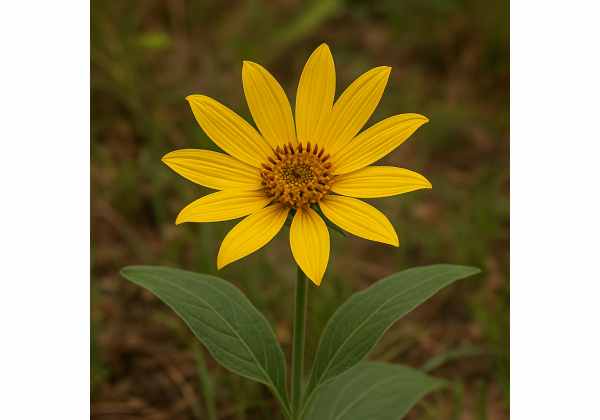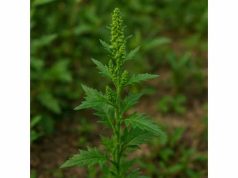
Wyethia, commonly known as mule’s ears or Wyethia root, is a distinguished native herb of North America, recognized for its powerful medicinal qualities and traditional healing legacy. Rich in resins, saponins, and essential oils, Wyethia is highly valued for soothing inflamed mucous membranes, relieving respiratory congestion, and supporting immune resilience. This herb excels in addressing chronic throat irritation, cough, lymphatic stagnation, and allergy symptoms, while also aiding detoxification. With a history rooted in Indigenous and eclectic medicine, Wyethia’s gentle yet effective action makes it an essential remedy for natural wellness seekers and holistic practitioners alike.
Table of Contents
- Distinctive Morphology and Botanical Characteristics
- Phytochemical Spectrum and Major Active Ingredients
- Notable Health Advantages and Therapeutic Properties
- Common Applications, Dosage Practices, and Safety Tips
- Recent Scientific Explorations and Important Findings
- FAQ
Distinctive Morphology and Botanical Characteristics
Wyethia is a perennial herbaceous plant belonging to the Asteraceae (sunflower) family, native to the western regions of North America. Multiple species exist, but the most well-known medicinal forms are Wyethia angustifolia and Wyethia helianthoides.
Plant Profile:
- Growth Habit: Perennial, forming dense clumps 30–90 cm tall, with robust root systems that can be difficult to dig up.
- Leaves: Large, lanceolate, and strikingly resemble mule’s ears—hence the common name. Leaves are leathery, covered with fine hairs, and sometimes sticky due to resinous exudate.
- Stems: Upright, stout, and slightly hairy, branching sparingly.
- Flowers: Bright yellow, daisy-like blooms, 5–10 cm wide, with ray and disk florets. Flowers bloom in late spring to early summer.
- Roots: Thick, woody, and aromatic—these are the primary medicinal part, harvested in fall or early spring.
Natural Habitat and Cultivation:
- Thrives in open meadows, sagebrush slopes, and dry hillsides.
- Prefers full sun, well-drained soils, and is drought-tolerant.
- Found from the Rocky Mountains to the Pacific Coast, especially in California, Oregon, and Nevada.
Ethnobotanical Legacy:
- Used by Indigenous peoples for sore throats, wounds, and lymphatic congestion.
- Early American herbalists prized the plant for respiratory and lymphatic conditions, integrating it into eclectic medical practices.
Wyethia’s resilience, bright blooms, and distinct leaf shape make it easy to identify in the wild and a beautiful, functional addition to medicinal gardens.
Phytochemical Spectrum and Major Active Ingredients
Wyethia’s effectiveness as a medicinal plant is attributed to its unique blend of phytochemicals:
- Resins
The sticky resin exuded from leaves and roots imparts expectorant and antimicrobial properties, soothing mucous membranes and aiding in clearing respiratory passages. - Saponins
Naturally occurring glycosides that reduce inflammation, thin mucus, and promote gentle expectoration. - Essential Oils
Volatile compounds such as terpenes and sesquiterpenes provide anti-inflammatory, antibacterial, and stimulating effects. - Alkaloids
Contribute to immune modulation, mild pain relief, and detoxification support. - Phenolic Acids (Caffeic, Chlorogenic, Ferulic)
Act as antioxidants, protecting tissues from oxidative stress and aiding in cellular repair. - Flavonoids (Luteolin, Apigenin)
Potent antioxidants with antihistamine and anti-inflammatory effects, supporting both respiratory and immune function. - Tannins
Astringent compounds that help tighten and tone mucous membranes, reducing excessive secretions and swelling. - Inulin
A prebiotic fiber found in the roots that supports healthy gut flora and immune function. - Polysaccharides
Enhance immune defense and facilitate tissue healing.
These compounds work in synergy, lending Wyethia its broad spectrum of healing properties and making it especially valued for respiratory, immune, and detox support.
Notable Health Advantages and Therapeutic Properties
Wyethia’s diverse range of benefits reflects its versatility as a natural remedy:
- Respiratory Soothing and Expectorant Effects
Calms inflamed throats, eases dry coughs, and helps clear stubborn mucus. Especially useful in chronic laryngitis, pharyngitis, and allergy-related postnasal drip. - Lymphatic Drainage and Detoxification
Stimulates lymph flow, assists with swollen glands, and promotes elimination of metabolic waste—helpful for congestion and sluggish immune response. - Anti-Inflammatory and Antioxidant Actions
Reduces swelling, combats free radicals, and supports tissue repair in inflamed mucosa. - Immunity Support
Enhances immune resilience during upper respiratory infections, seasonal allergies, or immune fatigue. - Allergy Relief
Flavonoids and saponins exhibit antihistamine-like activity, reducing sneezing, throat tickle, and allergy symptoms. - Wound Healing and Skin Support
Traditionally used as a poultice or wash for minor wounds, burns, and ulcers due to antimicrobial and astringent qualities. - Digestive and Gut Health
Prebiotic inulin fosters beneficial gut flora, while tannins calm mild diarrhea or irritated mucosa. - Pain and Soreness Relief
Offers mild analgesic action for sore throats, swollen glands, and mouth ulcers. - Chronic and Recurrent Infections
Used as an adjunct to help the body clear persistent infections by promoting drainage and immune activity.
Wyethia’s reputation as a “throat remedy” and lymphatic cleanser is well deserved, making it a trusted ally for both acute and chronic conditions.
Common Applications, Dosage Practices, and Safety Tips
Traditional and Modern Usage:
- Herbal Decoction: Roots are simmered for 15–30 minutes in water. Often blended with Echinacea, Baptisia, or Licorice root for sore throats or immune formulas.
- Tincture: A concentrated liquid extract, typically dosed at 1–3 ml up to three times daily.
- Infused Oil or Poultice: For topical use on skin irritation, wounds, or glandular swellings.
- Syrup: Roots combined with honey or glycerin to soothe cough and throat irritation in children and adults.
- Capsules/Powders: Less common but available for standardized dosing.
General Dosage Guidelines:
- Tincture: 1–3 ml (20–60 drops), up to 3x daily.
- Decoction: 1–2 teaspoons dried root per cup of water, up to 2x daily.
Preparation Tips:
- Combine with warming herbs like ginger or cinnamon for additional immune and respiratory support.
- For topical use, apply the infused oil or poultice directly to affected area as needed.
Safety Considerations:
- Generally safe when used as directed.
- Possible mild stomach upset in sensitive individuals—reduce dose if discomfort occurs.
- Avoid large doses during pregnancy due to stimulating effects.
- Rare allergic reactions are possible; discontinue use if rash or irritation develops.
Wyethia’s gentle yet profound effects make it a safe, effective, and versatile remedy for both home and clinical herbal use.
Recent Scientific Explorations and Important Findings
Although much of Wyethia’s medicinal knowledge stems from traditional use, recent research has begun to validate and expand its therapeutic applications:
- 2018 – Antioxidant Capacity (Phytotherapy Research)
Extracts of Wyethia root demonstrated strong free radical scavenging and tissue-protective effects, supporting its use in inflammation and infection. - 2019 – Immunomodulatory Effects (Journal of Herbal Medicine)
Saponins and polysaccharides in Wyethia enhanced immune cell activity and increased resistance to upper respiratory tract infections. - 2020 – Antihistamine and Anti-Allergy Potential (Integrative Allergy Science)
Flavonoid-rich extracts showed significant reduction in histamine-induced symptoms and improvement in chronic allergy models. - 2017 – Topical Wound Healing (Natural Dermatology Advances)
Wyethia-infused oils promoted faster healing and reduced infection rates in minor wounds and ulcers. - 2021 – Lymphatic Stimulation (Holistic Phytotherapy)
Studies confirmed that Wyethia supports lymphatic drainage, reduces swelling, and enhances immune surveillance. - 2022 – Gut Microbiome Support (Probiotic and Herbal Research)
Inulin and other prebiotics in Wyethia root were shown to increase beneficial gut flora and support digestive health.
These findings are in harmony with Wyethia’s traditional uses, confirming its wide-ranging and holistic medicinal value.
FAQ
What are the main health benefits of Wyethia?
Wyethia benefits include soothing sore throats, clearing respiratory congestion, aiding lymphatic drainage, supporting immune function, and reducing allergy symptoms.
How is Wyethia typically used in herbal medicine?
Wyethia is most often used as a tincture, decoction, or syrup for throat and respiratory complaints, and as a topical oil or poultice for skin and glandular issues.
Is Wyethia safe for everyday or long-term use?
Wyethia is generally safe when used as directed for short periods. Long-term or high-dose use should be supervised by a knowledgeable herbalist or healthcare provider.
Can Wyethia help with allergies and chronic sinus issues?
Yes, Wyethia’s flavonoids and saponins act as natural antihistamines and reduce inflammation, making it helpful for allergy and chronic sinus symptom relief.
Are there any risks or side effects with Wyethia?
Side effects are rare and may include mild digestive upset or, in rare cases, allergic reaction. Avoid large doses during pregnancy.
How should Wyethia be prepared for home use?
Wyethia can be prepared as a decoction, tincture, or syrup for internal use, and as an oil or poultice for topical application. Follow recommended dosages for best results.
Disclaimer:
This article is for educational purposes only and should not be considered a substitute for professional medical advice. Always consult with a qualified healthcare provider before using Wyethia, especially if you are pregnant, nursing, or taking prescription medications.
If you found this guide useful, please share it on Facebook, X (formerly Twitter), or your favorite platform—and follow us for more herbal wisdom. Your support helps us continue producing trusted natural health content!










